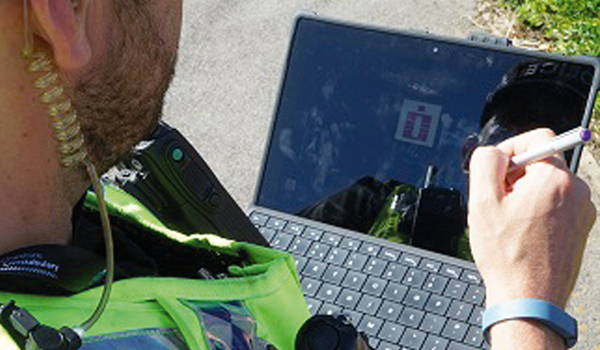Next generation video surveillance system
A new 360-degree surveillance video being developed in the US uses
image-stitching technology that is perfectly detailed edge-to-edge to
give high-resolution detail and multiple views.

A new 360-degree surveillance video being developed in the US uses image-stitching technology that is perfectly detailed edge-to-edge to give high-resolution detail and multiple views.
Anew video surveillance system currently being developed in the US may soon give police officers an extra set of eyes. Traditional surveillance cameras have proved useful in a variety of law enforcement scenarios canvassing a crowd for criminal activity, searching for a suspect who left a suitcase bomb beneath a bench, or trying to pick out a terrorist who has fled the scene and blended into the crowds on the underground.
But there are shortfalls. For example, once they zoom in on a specific point of interest, they lose visual contact with the rest of the scene.
The Imaging System for Immersive Surveillance (ISIS), under development by the US Department of Homeland Security (DHS) Science and Technology Directorate (S&T) takes new video camera and image-stitching technology and bolts it to a ceiling, mounts it on a roof, or fastens it to a truck-mounted telescoping mast.
The device containing the new system is round and features multiple objectives, which are used as a single viewing source. This means that the image ISIS produces is actually a quilt of several high-resolution cameras. The end result is a very wide-angle, fisheye-like view that carries exceptional details from edge-to-edge.
One of the disadvantages of fisheye lenses is that they distort the image and thus carry very little detailed data. The areas around the edges are generally difficult to zoom into and provided blurry and fuzzy views. But ISIS is different because it can easily zoom into any corners. The view is clear and with detail to spare, thanks to the fact that edges of the overall image are actually captured through high-resolution, stand-alone cameras. As such, surveillance experts can now zoom in on a region of the live video stream, without losing coverage of the wide-field as a whole.
Coverage this sweeping, with detail this fine, requires a very high pixel count. ISIS has a resolution capability of 100 megapixels, explains S&Ts infrastructure and geophysical division programme manager, Dr John Fortune. He adds that this is the same level of detail as 50 HD TV sets playing at the same time and all of it coming from a single ISIS. The original technologies that were modified in order to create the new system were developed for military applications by researchers at the Massachusetts Institute of Technology (MIT) Lincoln Laboratory.
The stitching together of several images isnt cutting-edge magic, but this has historically been still images, created days or weeks after a scene was shot. ISIS is quilting video in real-time
A suite of software applications, called video analytics, can define an exclusion zone, for which ISIS provides an alert the moment its breached, or let the operator pick a target such as a person, package or vehicle and the detailed viewing window will tag it and follow it, automatically panning and tilting as needed.
Video analytics at high resolution across a 360-degree field of view, coupled with the ability to follow objects against a cluttered background, would provide enhanced situational awareness as an incident unfolds.
In the event of a terrorist attack, for example, forensic investigators can pore over the most recent video, using pan, zoom and tilt controls to reconstruct who did what and when. Because these controls are virtual, different regions of a crime scene can feasibly be studied by separate investigative teams simultaneously.
ISIS creators are already looking to a new and improved second generation model, complete with custom sensors and video boards, longer range cameras, higher resolution, a more efficient video format and a discreet, chandelier-like frameno bigger than a basketball. Eventually, the Department plans to develop a version of ISIS that will use infrared cameras


